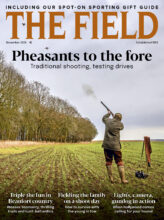Although it demands effort and practice to master, when used well the 28-bore can change an ordinary driven day into something remarkable says Michael Yardley
The 28-bore is enjoying something of a renaissance. Once deemed only for young shots and lady guns, it now has a growing band of enthusiasts of all ages and sexes. Effective for clays and game at sensible ranges, it is also great fun to use. Indeed, I know of no other bore size that brings a smile to users’ faces quite so readily. The 28-bore has another quality much in its favour: used well it can bring back real sport into less challenging situations. It makes the ordinary interesting.
For two seasons I rarely felt under-gunned when I shot a 28-bore (a 30in Beretta EELL) exclusively on driven game, and I have used one in the US for plantation quail, where it may be considered a near-ideal sporting weapon. Some shoots closer to home may be sceptical of 28-bores unless the user can prove competence with driven quarry, so you must make sure you can handle it first (both clays and woodpigeon might feature in pre-driven-day prep).
Although 28-bores might not be the popular choice for driven game in Britain, some sportsmen have employed them to exceptional effect. Sir Joseph Nickerson immediately comes to mind with his trio of 26in-barrelled, 5lb 53/4oz, ribless Purdey over-and-under 28-bores (choked ½ and ⅞, ⅞ and ½ and full and full). In A Shooting Man’s Creed (1989), he noted: ‘I am now down to 28-bore guns for all types of shooting and am killing birds as difficult and as far away as I ever did with a 12-bore.’ Encouraging stuff, yet less experienced shots should not be tempted to shoot beyond sensible limits. A well-choked 28 – I favour 1/2 and 1/2 or 1/2 and 3/4 (assuming lead shot) – will kill birds at 40 yards but one should not attempt to reach out too far.
Nickerson also noted that the ‘faster swinging’ qualities of the 28-bore gun were a boon to him. True to a degree for lesser mortals but one can go overboard with the lighter and faster-moving rationale. Typically, lighter and faster 28-bores do require extra control. Many shots actually need to slow down to do their best work (but to keep pushing on – which may call for extra effort with a small-bore to finish the shot well). Lack of mass can lead to both wild swinging and stopping. For this reason, I tend to favour mid-weight guns and longer barrels. They steady the gun, making it less wand-like.
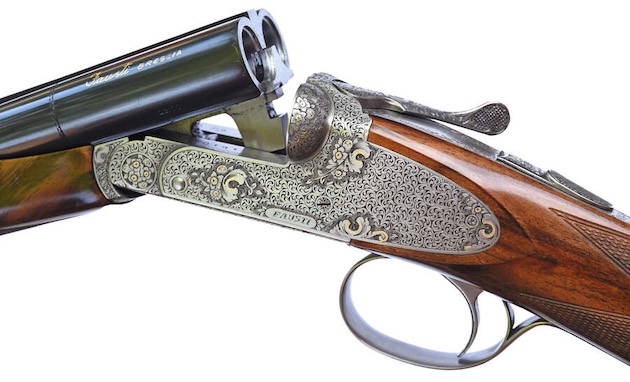
Fausti offers 28-borew in both over-and-under and side-by-side
Guns significantly under 6lb feel too whippy in my experience: 53/4lb to 6½lb would be a sensible range for most applications. There was a craze some years ago for building ultralight 28-bore doubles. They rarely shot well. Generally their barrels were short, reducing both pointability and control for most users. Barrels of 28in are a good length for 28-bores but after experiment and comparative testing I have come to favour 30in barrels, now my chosen barrel length for all bores. I can swap between 28- and 20-bore 30in guns with little discernible difference in handling (the 12-bore requires a slightly different approach because it is significantly heavier). I find 30in 28-bore (and 20-bore) guns better balanced and steadier than those with shorter barrels but they are still not unwieldy. They continue to retain the charm of the 28-bore shotgun.
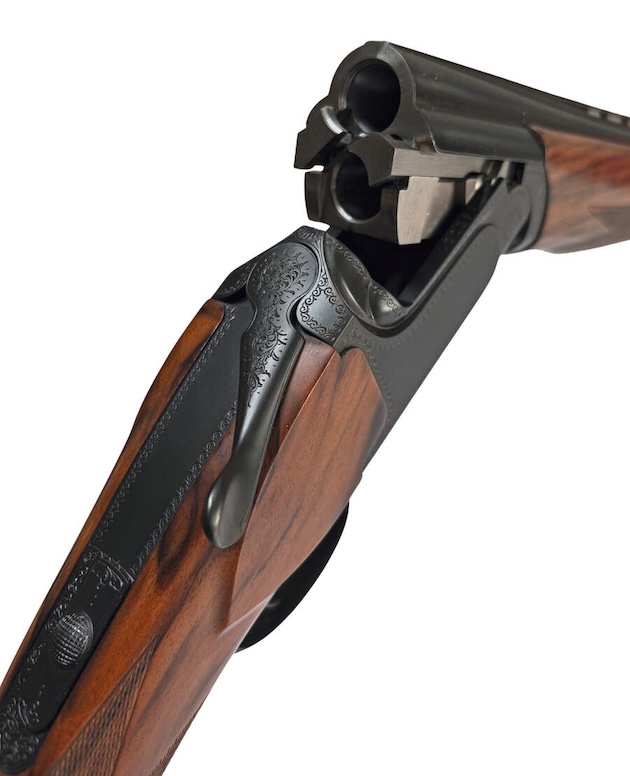
Serious shots pushing the limits of the bore seem to favour Perazzis, such as the MX28B, with 32in barrels
Using 32in barrels can be effective too and is favoured by some driven shots and a growing number testing themselves on sporting clays with a 28-bore. Several makers offer additional 28-bore barrels for their 32in 20-bores. These are a good way to experiment with the outstanding ballistics of the cartridge but they may encourage attempts to make a 28 do too much and in the process (perhaps) lose the point of it. For me, part of the attraction of the 28 is in its handiness and lack of bulk. Used with finesse, a relatively small, light gun can be made to do almost everything a bigger bore can. There is great satisfaction in doing that without stretching the gun into something it was not intended to be. If you are going to shoot high birds regularly, use a 20-bore or a 12-bore.
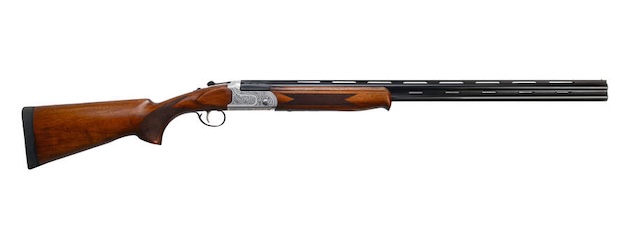
Kofs offer well-priced Turkish 28s
You will not, meanwhile, go wrong with mid-weight (6lb or just over) 30in guns. Over-and-under or side-by-side? Generally speaking the stack-barrelled gun with a good, fairly narrow, preferably solid rib is easier to shoot and more controllable; however, the challenge of the side-by-side 28 may appeal to some, as may its scale and form. We might also make mention of 28-bore semi-automatics. Gas- and inertia-operated models are available (both are good), which are fun to use too and have applications in both clay and pigeon shooting. Beware, however, some are just too light for routine work. My advice would be to avoid ultralight models unless you wanted to equip one with a sound moderator (it’s possible and arguably more efficient than a quietened .410).
Cartridge choices
The bore diameter of the 28-bore gun is around .55in compared with about .615in in a 20 and something over .710 in a 12. It began as a muzzle-loader, then as a breechloader pinfire cartridge in the 1860s with the centrefire version appearing a few years later. By 1880 the standard cartridge was 2½in long with a 9/16oz load (16g). American cartridge companies were instrumental in lengthening the cartridge in the 20th century and 2⅞in 28-bore cartridges with ¾oz of shot were made by several US firms after the First World War and 2¾in was standardised after the Second World War.

FAIR’s 28-bore side-by-side
Modern 28-bores are usually 2¾in chambered; older guns will probably be 2½in unless re-chambered and proofed. Although the .410 has long had a 3in magnum, this has only recently been the case for the 28. Federal and Fiocchi now offer 3in 28-bore cartridges with really heavy payloads as well as conventional 2¾in loads. The Federal round can, remarkably, deliver 1½oz of shot. The company also offers 2¾in steel loads and HEVI-Bismuth. Steel loads for 23/4in chambers are not readily available yet in Britain, though they can be made by home loading. Clay & Game in East Yorkshire can supply information, components and equipment. Stephen Dales of that firm has been developing data for 15g to 17g steel and Tungsten Super Shot loads. He also supplies copper-coated bismuth suitable for 28-bores.
I was once very fond of Winchester’s 1oz No 6 shot loads for driven shooting (no longer available in the UK sadly) but the modern British trend seems to be for loads just under an ounce with both 5 and 6 shot popular. Lighter loads are more efficient – there is less bore friction – and consequently faster. Most 28-bore cartridges sold (and there is a surprising range available) have payloads in the 14g to 28g range: 21g, 23g, 25g, 26g, 27g and 28g loads are offered now with plastic and other more environmentally friendly wad types. The options are extraordinary considering the limited market size.
Lyalvale makes an excellent fibre-wadded 14g training cartridge as well as 2½in (65mm) 21g Supreme Game in 5, 6, 7 and 8. Eley has VIP Game in a 16g fibre wad (6 or 7 shot), 21g fibre (6 or 7) and 24g fibre (5, 6 and 7). Gamebore offers 16g to 28g Regal Game loads with fibre wads save for the 28g 5 shot, which has a plastic wad. Its 27g with a wool wad and loaded with Diamond 5, 6 and 7 shot also merits special attention. Gamebore lists a bismuth load (21g 41/2, 5 and 6). Hull has a 21g bismuth load as well, and 18g Comp X (2½in chamber) and 21g Pro 28 competition loads, as well as 23g (5 and 6) and 25g (5) High Pheasant game loads with fibre wads. RC still has a 1oz (28g) load in 5 and 6 with a plastic wad. Overall, there is a wonderful range of developed cartridges today but finding shops that actually stock them can be an issue – cartridge availability (and cost) is always a consideration with a 28. For this reason and because of the cost factor, 20-bores with low-payload cartridges may be a more practical proposition for instructional purposes.
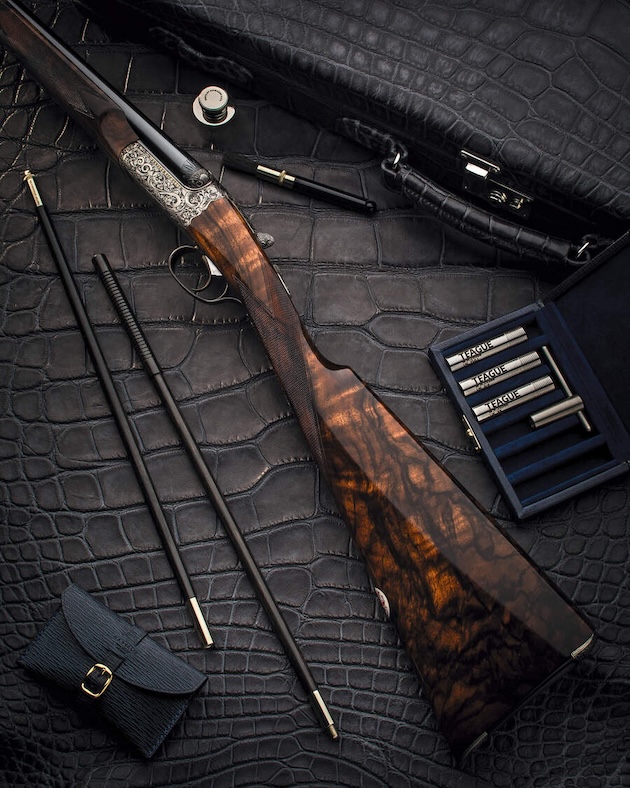
Westley Richards also makes custom 28-bores
Choosing a gun
Double-barrelled 28-bores may be made on dedicated actions, or 20-bore actions to reduce manufacturing costs. Cutting to the chase, and to dispel choice paralysis, if you are starting out on a 28-bore journey a good place to begin would be with a new or second-hand Beretta Silver Pigeon, which is built on a dedicated action. I would go for a 30in gun for the reasons discussed.
Webley & Scott and Kofs both offer really well-priced Turkish-made 28s. FAIRs are good – simple and reliable, Italian guns (the firm makes a 28-bore side-by-side too). Caesar Guerini offers its excellent Maxus and Maxum sideplates in 28-bore, as well as the unplated but attractive Tempio. I have also had positive experience with Fausti 28-bores (this maker offers 28-bore shotguns in over-and-under and side-by-side in various grade).
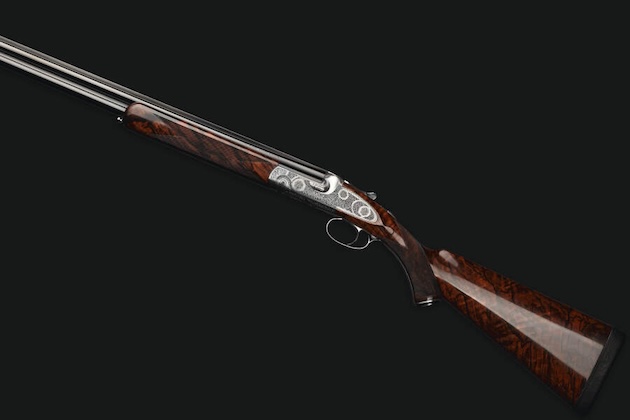
A bespoke 28-bore shotgun built by James Purdey & Sons
Serious shots pushing the limits of the bore seem to favour Perazzis with 32in barrels. ASI has an extensive range of Rizzini 28-bores too and, unusually, these are already future-proofed with steel shot proof and 3in chambers (although 3in steel shot 28-bore cartridges are not readily available in Britain unless you handload as noted). ASI launched a .410, 28- and 20-bore model at The Game Fair: the deepscroll- engraved BR221 (a BR220 with EL engraving), which has been conceived for our tastes. It might also be mentioned that Purdey, Holland & Holland and Westley Richards still make wonderful bespoke 28-bore guns. John Rigby is also offering its redesigned Rising Bite sidelock in 28-bore.
Traditionally a London-trained gunfitter would make a lighter small-bore a little longer in the stock as he would make a heavy big-bore shorter. A small-bore might also require less cast because the stock comb is often thinner (an excessively thin comb is to be avoided, though, because it does not support the face adequately). The barrels of small-bores have reduced width too. This usually has a positive effect, however, improving their pointability especially with longer tubes.
These guns are generally relatively light and consequently they handle quickly. ‘Quick to start, quick to stop’ is the old adage. They need control and more muscular effort than might at first be apparent. The tendency to be overcome is rushing to a stop or rushing through the mark. You need to use the hands well too with a certain delicacy of grip (potentially aided by good grip and fore-end shapes). If the stock is short, extending the front hand may help. Thin gloves can aid purchase but thick ones can hinder with narrow barrels. Pay particular attention to the use of the front – pointing – arm and hand, and the upper body too. On crossing birds the upper body must move as a locked-up unit (think of a tank turret rotating). Follow-through is important and more difficult with small-bores because of their relative lack of mass. On high birds, the whole body must be involved. Make an effort to push on smoothly arching the back and lower body when required and lifting through well with the front arm. Keep the head down on the stock and the eyes locked on the bird throughout as with any shot. Don’t stop prematurely. Push on. Also, find a cartridge you have real confidence in (which necessitates comparative experiment) and make the effort to pattern it: you may be surprised just how good it is.
Final thoughts
The 28-bore is no ballistic slouch. It is fun and it will pull down birds at surprising distances but it was not intended as a long-range weapon. Sensible guns will stay inside 35 yards and not be tempted by longer shots until they have refined their skill. The 28-bore demands effort and practice (and no better place than a skeet range initially). When mastered it can change the ordinary driven day into something memorable. It makes a lovely partridge, woodcock or quail gun, it’s ideal for walking-up and there is a particular pleasure in bringing a good cock bird down with one. You tend to remember your birds with a 28.


